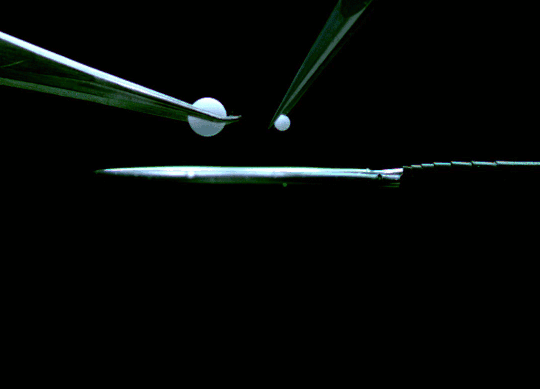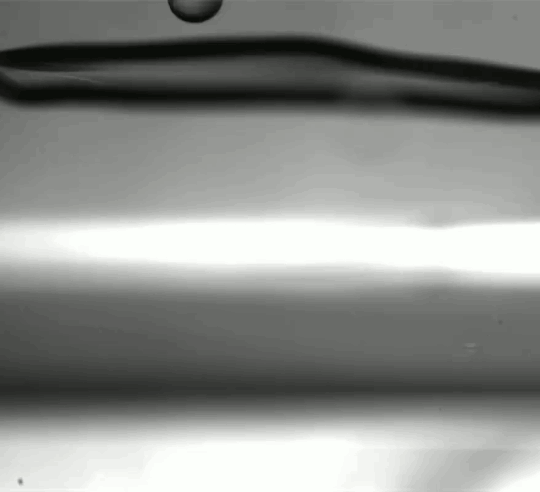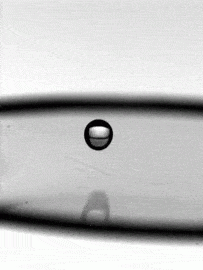Inspired by the self-healing properties of soap films, scientists have created a liquid filter capable of trapping small particles while allowing larger ones to pass through. Instead of filtering particles by size, as conventional filters do, this liquid membrane filters particles by kinetic energy; only large, fast-moving objects pass through while slower and smaller ones get trapped. The membrane is a mixture of deionized water and sodium dodecyl sulfate, which allows researchers to finely tune the membrane’s surface tension and, therefore, how the filter behaves. Unlike soap films, the membrane is quite long-lived and robust. The team poked one for more than 3 hours without rupturing it.
The researchers envision some pretty neat applications for these membranes, including a surgical membrane that would keep out dust and bacteria while doctors work or a membrane in a waterless toilet that could trap odors inside. (Image and research credit: B. Stogin et al.; video credit: Science; submitted by Kam-Yung Soh)







